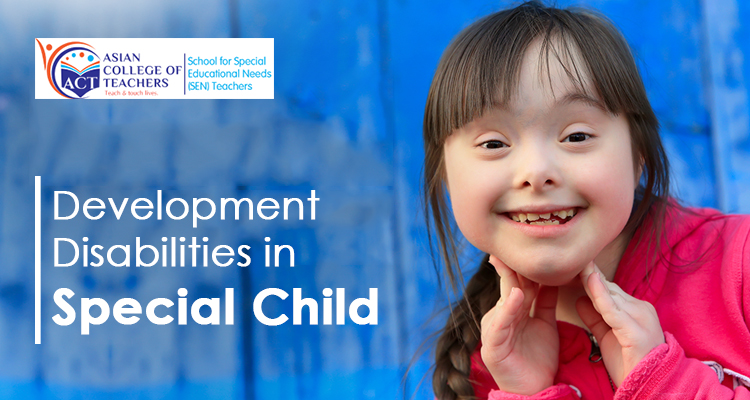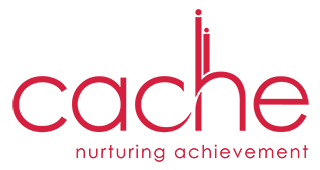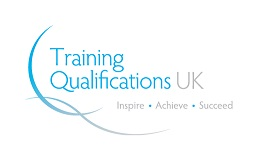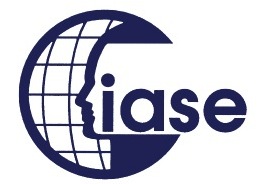10 Development Disabilities in Special Child
28th June 2019

Special need students are a mainstay in every school across the country. A special needs child can be fitted into several different categories because of the vast number of development disabilities known today. A child with special needs may be regarded as disabled in several ways ranging from a profound development disorder to mild issues with learning. The umbrella of special needs also includes certain children who would ideally not be considered in this manner.
Not all special children are afflicted with learning disabilities. For some of them, it is merely a case of having needs that need to be planned for an addressed within their learning environment. Motor skill delays, emotional concerns, terminal illnesses, and severe food allergies fall under this category. Schools need to equip themselves in several ways so as to better deal with the ramifications of having such students.
Some Common Development Disabilities to Be Aware of
ADD/ADHD:
Attention Deficit Hyperactive Disorder is a condition affecting around 5% of schoolchildren. Parents and teachers should develop skills for intervention and prevention not only for the sake of the affected child but also for the sake of other students who wish to enjoy a learning environment that is free from disruptions.
Aphasia & Dysphagia:
Dysphasia refers to a language disorder, also referred to in the medical world as aphasia to avoid confusion with the swallowing disorder dysphagia. Aphasia is the more commonly used term associated with speech impairment that varied from no speech to difficulty in naming of some objects. This is more common in adults who have suffered a brain injury or stroke.
Central Auditory Processing Disorder (CAPD):
Auditory Processing Disorders often tend to be overlooked but with the condition coming to the fore more often, professionals are looking at it more closely on how children and their education gets affected. Perfectly normal kids as well as those with hearing loss from an early age tend to get affected by CAPD. The child fails to process sound fast enough to distinguish it from normal language and can be labelled lazy or inattentive. However, a closer look could be necessary.
Autism & Asperger’s Syndrome:
Autism and Asperger’s are both referred to more commonly as Autism Spectrum Disorders as a range of disorders that affect the imaginative or creative play, social interaction, and verbal and nonverbal communication. Asperger’s is the milder condition usually appearing in the first three years of a child’s life. Inappropriate social behavior is one of the biggest outcomes leading to isolation and bullying.
Cerebral Palsy:
This is a development disorder that has been found in almost half-a-million US citizens. A long-term physical condition, this is brought about by an abnormal brain growth or a brain lesion that leads to impaired muscle development and control. CP could be a result of disease of injury to the fetus, a traumatic birth, or some later disease or head trauma to the child.
Down Syndrome:
Down Syndrome is a medical condition occurring due to the presence of an extra chromosome 21. There are some distinct features associated with this condition such as short stature, large tongue, short stubby hands, and small ears. Such children may also find themselves suffering from cardiac ailments or visual problems with a mild range of mental retardation as well.
Dyslexia: This is a form of learning disability that leads to alterations in the way written material gets processed by the brain, leading to writing, reading, and spelling becoming a challenge. Dyslexia is varied in individuals with most of them having above average intelligence but a significantly low reading level.
Emotional & Behavior Disorders:
To prevent troublesome behavior from escalating, an early intervention is very important. This way a safe environment can be created in the school and accelerate student performance and make them more ready for learning. A schoolwide structural change helps solve the problem better compared to individual efforts by the teachers.
Seizure Disorder:
Staff need to have a good understanding of seizure disorder in order to know how to address this condition in a special needs child. Seizures occur due to an imbalanced electrical activity in the brain and can be classified as grand, complex, or simple partial based on the intensity of the symptoms.
Visual Impairment:
A child will be classified as visually impaired if he has a medically verified visual impairment along with limitations in sight. The impairment should also be interfering with the process of interacting and acquiring information to the extent that special education services are called for.
Conclusion
Schools across grade levels will admit a child with special needs; sometimes, this means that a special needs child will require some additional assistance or service appropriate for their age since children with disabilities require greater patience and understanding compared to any average student.








